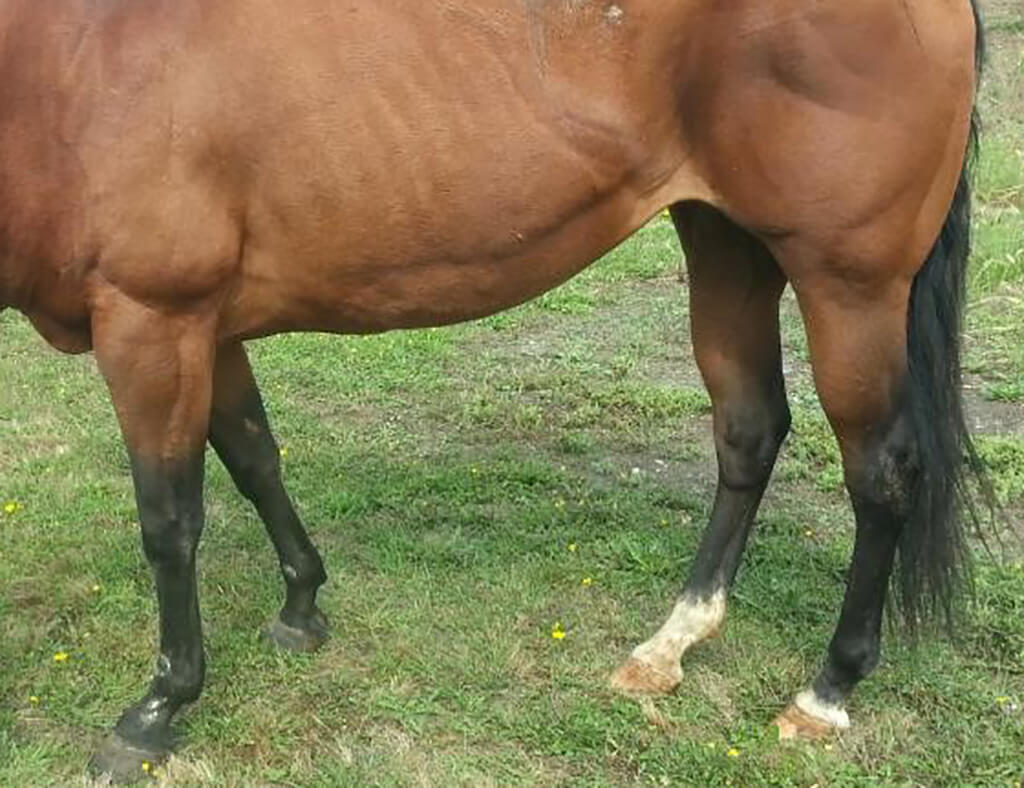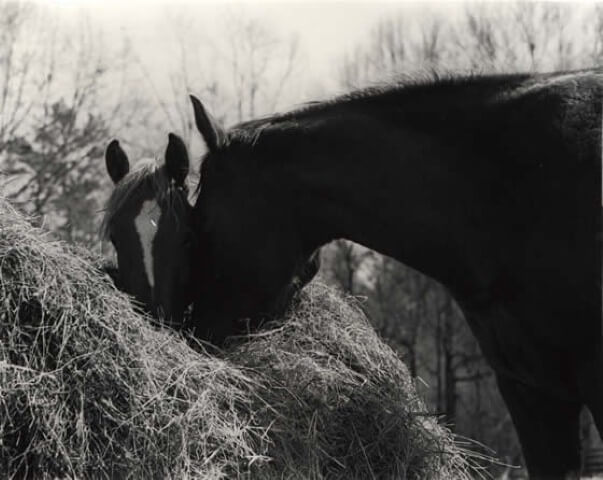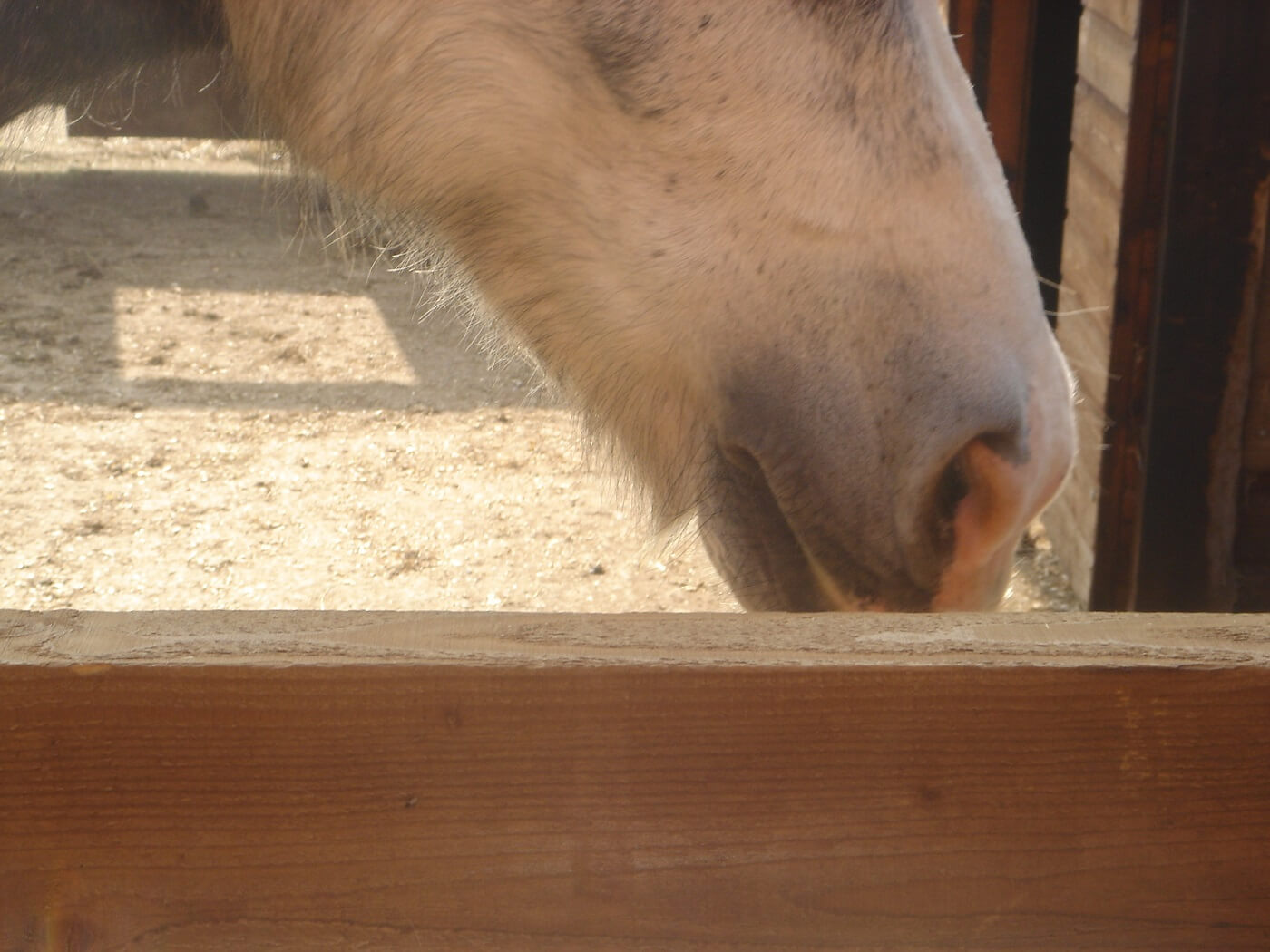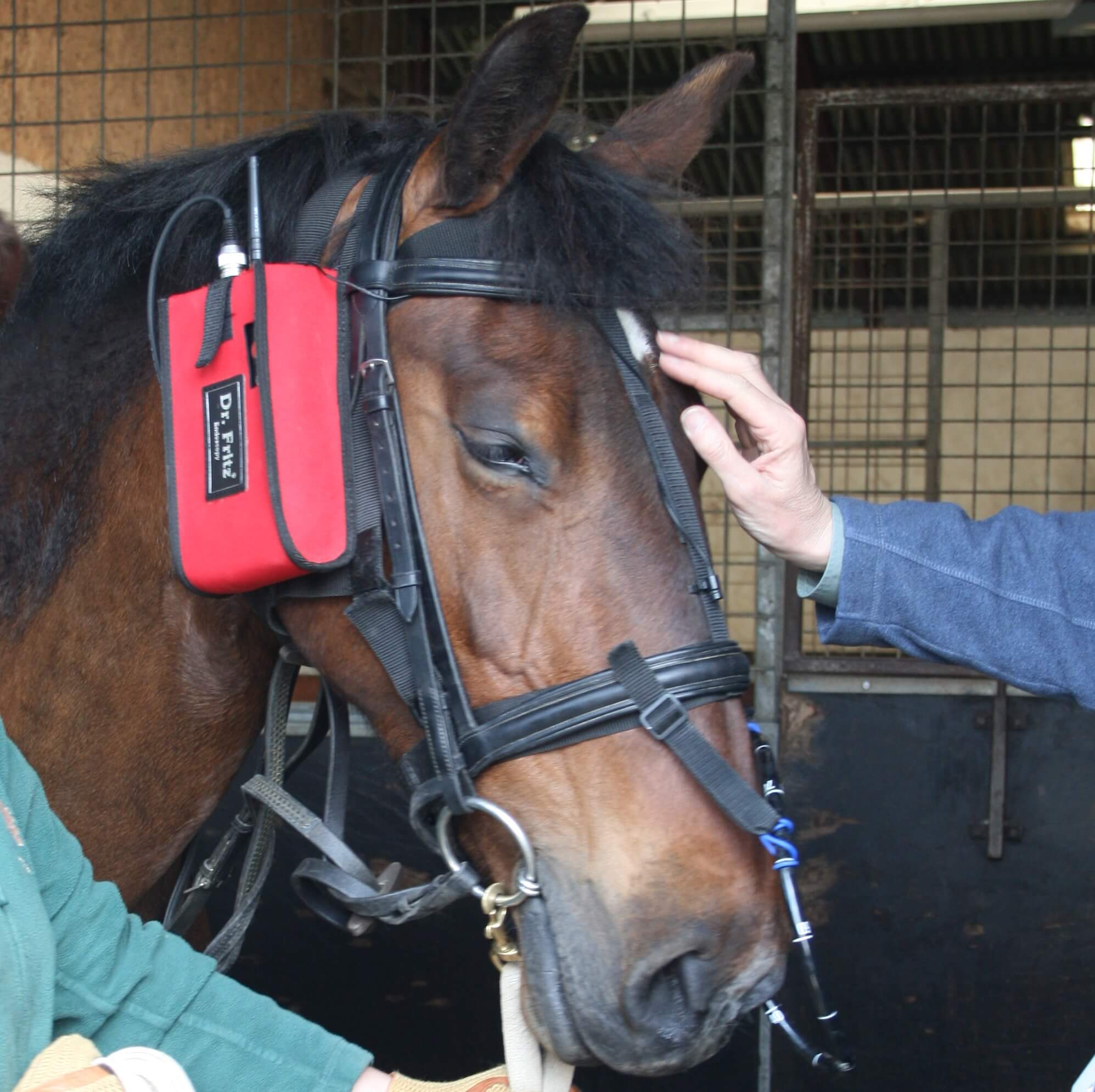Coughing Horse and Tips for Dust Free Management of Horses
A cough is a reflex action to clear airways of mucus and irritants. A horse’s lungs are continually dealing with attack from airborne moulds, bacteria and viruses, not to mention dust and ammonia which cause irritation, inflammation and increased mucus secretion. Some horses are more sensitive – those suffering from allergic airway conditions such as Equine Asthma or recovering from viruses. However many horses who are not (yet) showing signs of airway trouble such as a cough, getting out of breath or a nasal discharge, can also be helped. Reducing the attack which their body is fighting off all the time can help reduce the likelihood of them developing problems in the future, and improve their performance. Alarmingly 50% of horses with lung disease don’t cough!

‘Heave Line’ seen due to increased effort required to breath.
The idea: to reduce the amount of dust and mould spores in the air your horse breathes until you get to a level your horse can tolerate.
Plenty of fresh air is the key. However obviously for many horses all year round turnout is not practical, though with good rugs plenty of horses cope very well.
The single end gable louvres found in many stables are not enough to provide good ventilation. In many wooden stables removal of a couple of planks just below the guttering at the back of the stable can help enormously, or consider creating extra windows. Horses do not mind cold air if well rugged and dry. Stand in the corner of your stable and take a deep breath. Is the air clean or can you taste that it is dusty? Remember the horse breathes that air many hours a day. Ideally, the air in the stable should be as fresh as outside. Ammonia from soiled bedding damages the lining of the airways making horses more susceptible to breathing problems
High apex roofs create better airflow. Also a raised ridge will allow hot air to escape – remember hot air rises. If your stable has lots of cobwebs and/or mould patches on the roof then it has poor airflow! With some corrugated roofs alternate rows can be turned up the ‘wrong way’ giving air channels.
Clean straw can be as good as shavings, which can become dusty as they get older. Plenty of dust-extracted bedding materials are available these often need to be damped down. Rubber matting with a little bedding to absorb moisture can make a massive difference.
Have your horse well away from the stable when you muck out. The dust, mould and ammonia released into the air when mucking out will undo all your hard work otherwise! Similarly, groom in a well ventilated place.
Sweep out corners of boxes well because horses will snuffle around in the bed especially if hungry and bits of mouldy hay or bedding in the corners will not help.
Feed from the floor to allow the horse’s lungs to drain normally; they are designed to have their heads down for the majority of the time.

How much dust and moulds?
Soaking hay for 20-30 minutes causes the mould spores to stick to it, so the horse eats and digests them harmlessly rather than breathing them in. The hay must be shaken up prior to soaking and submerged fully in the water. Change soak-water daily. It is important the horse is only fed the amount he will eat before the hay dries as then you are in a worse position than before, when more mould grows on the damp hay! Clear away any leftover bits after every feed.
Alternatively, feeding haylage can make a big difference to many horses. Some horses will tolerate feeding hay by immersion and this is the only totally dust-free way of feeding hay. Place a large container in the stable, fill with water and dunk the shaken up hay in it. There is a very good container on the market that has a grille built in to prevent the hay floating to the surface, which the horse can eat through as if a hay rack.
Where is your muck heap? It needs to be well away from your stable.
If your stable adjoins others, their management needs to be as good as yours! Don’t house your horse next to the hay/straw store.
These changes may not be easy, especially on livery yards, and some changes will cost more money. However, balance this against multiple vet visits and drugs, and better performance from a healthier horse and it really is worth the effort.
Dust free management is a good standard to adopt, but essential with all coughing horses and in addition it can greatly reduce the drug bill too!
Your vet will also advise about drugs, investigating coughs/breathing difficulties as well as workload and long term plans.

Flared nostrils are a sign of breathing problems
Last updated May 2019
